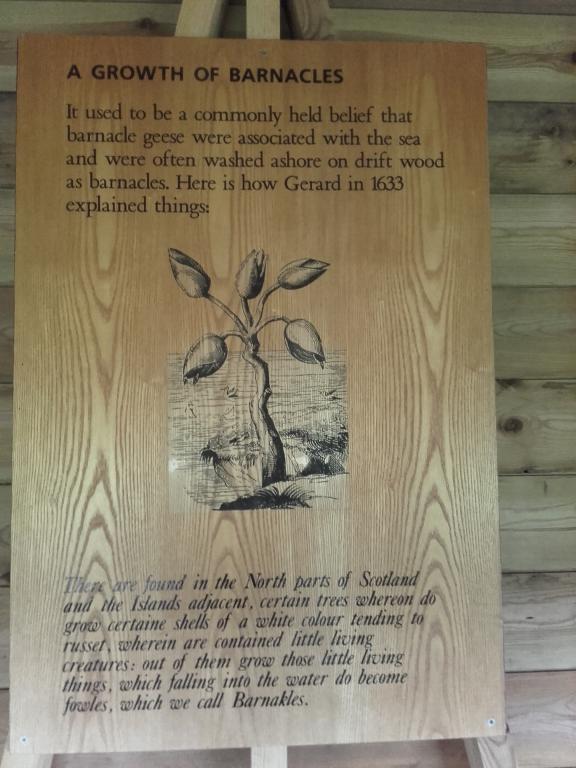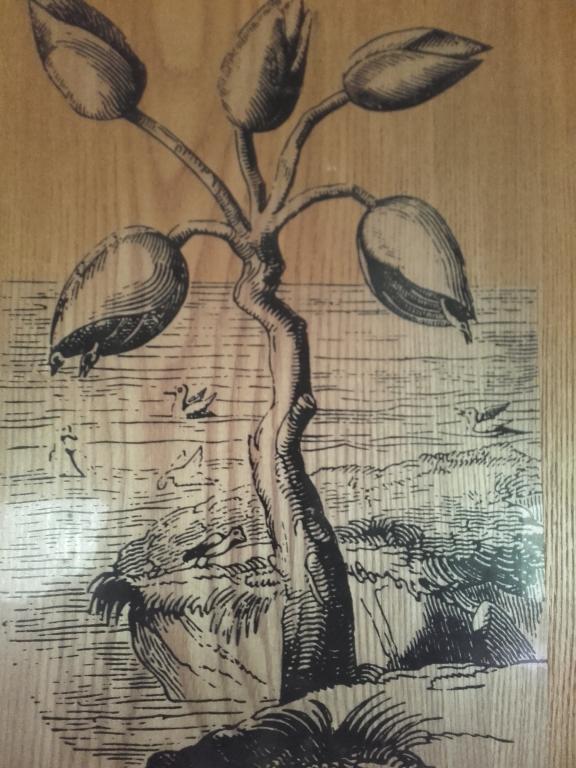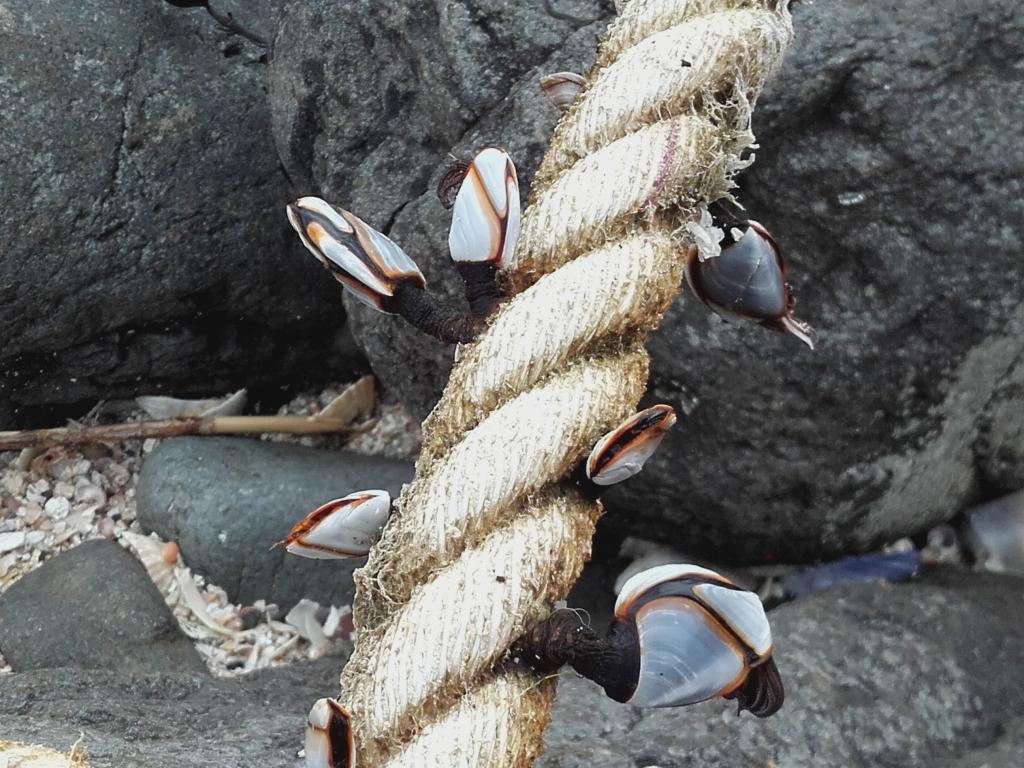
Discovery at Loch Gruinart, Islay
By Marg Greenwood
 'Goose Barnacle Tree' Poster at RSPB Loch Gruinart, Islay
'Goose Barnacle Tree' Poster at RSPB Loch Gruinart, IslayImage provided by Marg Greenwood
 Close-up of goose barnacles poster
Close-up of goose barnacles posterImage provided by Marg Greenwood
After sheltering in the RSPB Visitor Centre at Loch Gruinart I put on my wet weather gear to brave a downpour and made for the first bird hide. It was empty of bird watchers. I peered out of the opened shutters. Absolutely nothing. No geese or any wading birds. However I was captivated by a poster pinned to the wall, depicting a 'Goose Barnacle Tree'.
Islay is the best place in the UK to see Barnacle Geese and on an earlier visit I'd seen thousands of them picking over the marshy land.
1597 Gerard's Herbal mentions the Barnacle Geese, 'They are found in the north parts of Scotland and the adjacent islands, whereon do grow shells of a white colour tending to russet, whereon are contained little living creatures. Out of them grow little living things which falling into the water do become fowles, which we call Barnacles.' As long ago as 1188 a Welshman called Gerald of Wales wrote Topographia Hibernica. He wrote in Latin 'of Barnacles that grow from fir timber.'
I wrote this poem...
Before they knew that some birds migrate
and nest in far-off places,
they believed barnacle geese
were born from barnacles
stuck to driftwood swept ashore.
Somehow the driftwood became a 'tree,'
and grew branches; at the end of each
was a large barnacle
shaped like a fruit, or a tulip; open-ended.
And when the baby geese were ready to be born
they poked their fully-formed heads out of the fruit
and took their first dive
into the sea.
On Muck the previous year, I'd seen and photographed a curious find. It was a section of thick rope with what looked like smartly-designed mussels attached to it. Studying the poster in the Islay hide, the penny dropped. My photograph of the 'mussels' on Muck didn't depict mussels at all. They were goose barnacles! I was delighted to see the similarity between the patterns on the barnacles and the geese bodies.
 Goose barnacles on a rope on the Isle of Muck, Lochaber
Goose barnacles on a rope on the Isle of Muck, LochaberImage provided by Marg Greenwood
 Goose barnacles on a rope on the Isle of Muck, Lochaber
Goose barnacles on a rope on the Isle of Muck, LochaberImage provided by Marg Greenwood